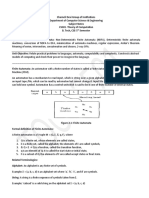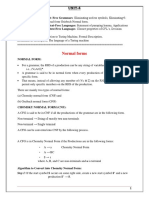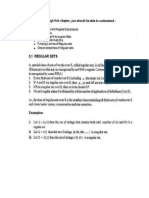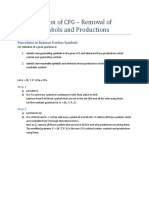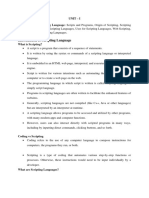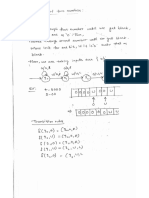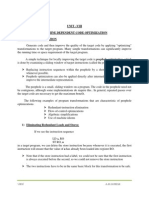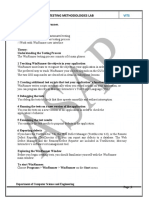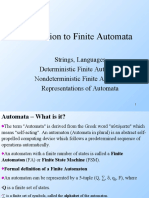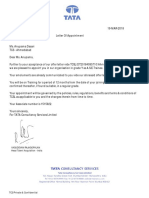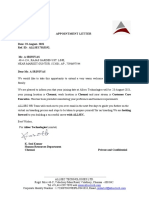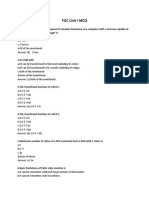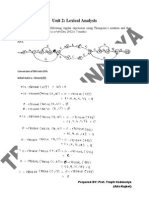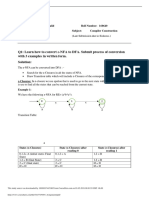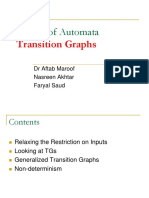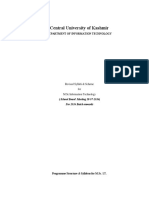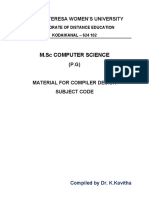0% found this document useful (1 vote)
785 views18 pagesFlat Unit 1 Notes
This document provides an overview of Unit 1 of the syllabus for CSE (Software Engineering) at Jawaharlal Nehru Technological University, Hyderabad. It introduces finite automata, including the formal definition of a finite automaton as a 5-tuple (Q, Σ, δ, q0, F). It describes non-deterministic finite automata (NFA) and deterministic finite automata (DFA), and covers basic concepts like alphabets, strings, languages, and problems. It provides an example of an NFA that accepts strings ending in "01" and discusses applications of NFAs for text search.
Uploaded by
SyamkumarDuggiralaCopyright
© © All Rights Reserved
We take content rights seriously. If you suspect this is your content, claim it here.
Available Formats
Download as DOCX, PDF, TXT or read online on Scribd
0% found this document useful (1 vote)
785 views18 pagesFlat Unit 1 Notes
This document provides an overview of Unit 1 of the syllabus for CSE (Software Engineering) at Jawaharlal Nehru Technological University, Hyderabad. It introduces finite automata, including the formal definition of a finite automaton as a 5-tuple (Q, Σ, δ, q0, F). It describes non-deterministic finite automata (NFA) and deterministic finite automata (DFA), and covers basic concepts like alphabets, strings, languages, and problems. It provides an example of an NFA that accepts strings ending in "01" and discusses applications of NFAs for text search.
Uploaded by
SyamkumarDuggiralaCopyright
© © All Rights Reserved
We take content rights seriously. If you suspect this is your content, claim it here.
Available Formats
Download as DOCX, PDF, TXT or read online on Scribd
/ 18
